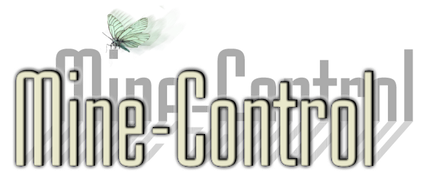General Requirements
1. Computer
Desktop PC running Windows 7 or XP (64 or 32 bit) at 3+ GHz with at least 512 MB RAM and a PCI Express slot. The computer must have at least one 6-pin Firewire IEEE 1394 port. Note that most machines no longer ship with a Firewire port so you either have to check that it has one or find a plug-in card. If you find a plug-in card then make sure that the computer has an appropriate slot available and that the slot is at least one space away from the graphics card so that you don't block the fan.
2. Video card
Both the ATI and nVidia chipsets are supported.
3. Video cables
Modern video cards tend to have digital DVI outputs but DVI cables will only go a few feet. Fortunately, DVI connectors nearly always have an analog side channel which can be run up to 20 feet without problems. Much further than that, and you may need to consider going to a high end component solution such as the RapidRun System. If the output from the computer is DVI you need a DVI to DSUB adaptor. The cable shown to the left is DSUB and the adaptor shown is DVI to DSUB.
4. Projector
Projector of sufficient brightness for room. Projectors come in two broad technologies: LCD and DLP. LCD projectors will always work with any of our effects, however only some DLP projectors will work and must be tested in advance. A brightness of 1500 lumens is typical in a dark room. Brightness varies with the ambient light in the room, but the only way to tell for sure if a projector is bright enough for the room is to test it. Projectorcentral.com is a good place to comparison shop for projectors although you should ignore the MSRP and price compare at other sites.
5. Lighting
Our work should be displayed in a room with low light which does not vary -- this requirement is extremely important. There should be little or no sunlight, and no strobes or bright lights near the projection surface. The brightness of the projector will affect how much light can be tolerated, the more ambient light there is, the brighter the projector needed to overpower it. Light levels for the projection should be similar to those acceptable for projecting a movie with the same projector. If you would be comfortable watching a presentation or movie on the projector, the lighting is adequate. In a darkened room, 1500 lumens is typically sufficient. However, the only way to tell for sure if a projector will be bright enough for a given room is to try it out. If lighting conditions change while the system is installed, the system may need to be re-calibrated. Note, people often worry that the requirement for low light implies that visitors won't be able to see their way; remember, however, that the projector itself is a very bright source of light, so when the projector is on, the room will be well lit.
6. Projector mount
The projector should be hard-mounted in a place where it will not move nor be subject to vibrations. Projectors that are mounted high (typical of shadow configurations) should be mounted upside down. The easiest way to do this is to buy a model-specific mount. Alternatively, you can cut a mounting board for the projector which can be done by the following method: Find screws which fit into the projector screw holes; place these screws into the projector and mark their heads with a pencil; press a piece of plywood which has been cut to approximate size of projector onto these screws leaving marks; drill out those marks and affix the board to the projector with the screws; affix the board to the ceiling or high shelf using appropriate fasteners such as sturdy zip-ties, rope, or metal brackets. Be sure that the projector will not move after it is mounted.
7. Camera (provided)
A Firewire Camera will be supplied with the software. The camera has a standard 1/4" threaded mount on the bottom and back plate. Note that if the camera is powered by the 6 pin firewire cable there is no need for a power connection near the camera. If you use a 4-pin firewire then you need power near the camera.
8. Camera Mount
A camera mount is not provided because such mounts tend to be specific to the installation. In general, it is best if the mount has a ball-socket head to give flexibility to aiming the camera. The mount shown on the left is least desirable because it has only a pivot head not a ball head like the other two.
9. Camera Mount
A camera mount is not provided because such mounts tend to be specific to the installation. In general, it is best if the mount has a ball-socket head to give flexibility to aiming the camera. The mount shown on the left is least desirable because it has only a pivot head not a ball head like the other two.
10. Power Cables
Power supply cables for projector and camera,power extension cords if needed.
11. Software (provided)
Our software, written in custom C++, shipped on a CD, together with an installation specific hardware copyright key which plugs into a USB port.
12. USB Hardware Protect Key (provided)
Our software requires a hardware USB key to copy protect it. This is provided with the software and connects to any USB port on the computer
13. Speakers
For effects that have sound, speakers should be provided and pointed near where the participants will stand.
Effect-specific Installation Requirements
There are six different physical layouts for installation. Not all effects work on all installation types. Please consult with us about what is appropriate for your effects and site considerations.
Click on one if the following
